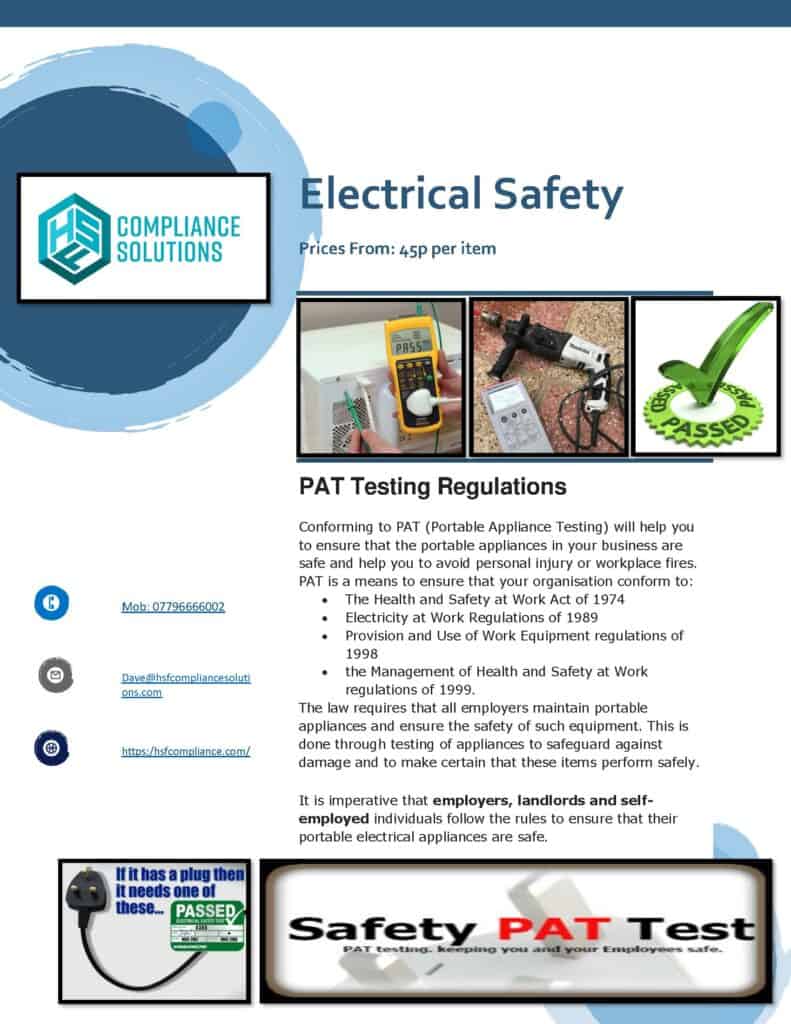PAT/EET Testing
What is PAT/EET Testing?
Portable Appliance Testing or PAT Testing is the process of checking electrical appliances for safety through a series of visual inspections and electronic tests.
Why do I need to have my appliances tested?
The simple answer is that the law requires it.
The Health and Safety at Work Act 1974 (Chapter 37 section 2(2)): Employers must ensure ‘The provision and maintenance of plant and systems of work that are, so far as is reasonably practicable, safe and without risk to health’
Electricity at Work Regulations (1989) Regulation 4.1 says, ‘All systems (everything that is connected to a common source of energy – even small appliances) shall at all times be of such construction as to prevent, so far as is reasonably practicable, danger.’ Regulation 10 Guidance note 164 says, ‘Special attention should be given to joints and connections in cables and equipment which will be handled, for example flexible cables for portable equipment.’
The Provision and use of Work Equipment Regulations 1998 (PUWER) says in Regulation 5(1) ‘Every employer shall ensure that work equipment is maintained in an efficient state, in efficient working order and in good repair’.
What does Portable Appliance Testing involve?
To establish the safety and suitability of your electrical appliances, the competent person will carry out a visual inspection of the appliance, its plug and lead. For Class I equipment they will also inject test signals into the cable and appliance to ensure their integrity.
Who should do the work?
What will I receive?
Upon completion of the portable appliance inspection and testing you should receive a report that details the following as a minimum:
- An inventory containing each appliance type, name, location and description
- A full set of test results for each appliance tested
- A full list of any failed items with an explanation of their failure
- A visible pass or fail label on each appliance detailing the inspection date, next test due and the inspector’s signature.
If you are not technically aware, then the contractor / competent person who carried out the inspection and testing should be happy to talk through your report with you and advise you of any further action required.

